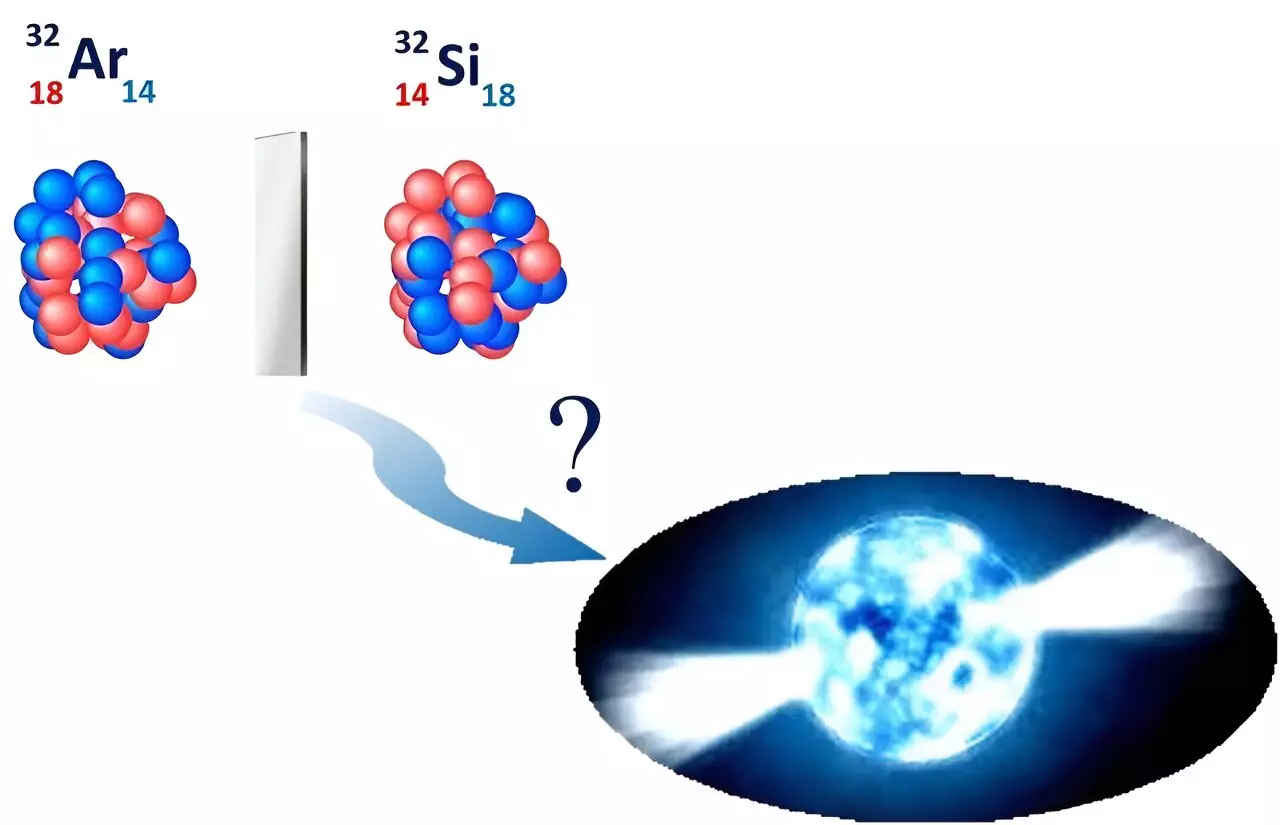When adding or removing neutrons from an atomic nucleus, the size of the nucleus changes. This alteration in size leads to tiny energy level changes in the atom’s electrons, known as isotope shifts. Scientists can harness precision measurements of these energy shifts to determine the radius of the nucleus of an isotope. In a recent study, researchers conducted laser-assisted measurements of the nuclear radii of various silicon isotopes, including stable silicon-28, silicon-29, and silicon-30, as well as the unstable silicon-32 nucleus.
The researchers compared the radius of the silicon-32 nucleus with its mirror nucleus, argon-32, to establish limits on various variables that contribute to the understanding of astrophysical objects such as neutron stars. These findings serve as a crucial step forward in the field of nuclear theory, which focuses on the study of nuclei and their constituent parts. The study’s results were published in the journal Physical Review Letters.
Despite progress in nuclear theory, scientists continue to encounter longstanding challenges in comprehending nuclei. One significant issue is the lack of connection between the description of nuclear size and the underlying theory of the strong nuclear force. Additionally, there remains uncertainty regarding whether nuclear theories that address finite atomic nuclei can offer a reliable depiction of nuclear matter, which comprises interacting protons and neutrons. Nuclear matter exists in extreme conditions, such as those found in neutron stars.
Precision measurements of charge radii, which refer to the radius of atomic nuclei, play a crucial role in addressing these unresolved questions in nuclear theory. By utilizing laser spectroscopy measurements of atomic isotope shifts at the BEam COoler and LAser spectroscopy facility (BECOLA) at the Facility for Rare Isotope Beams (FRIB) at Michigan State University, the researchers obtained valuable insights into the nuclear radius of different silicon isotopes.
The research outcomes not only serve as an essential benchmark for the advancement of nuclear theory but also have implications for the understanding of dense neutron matter within neutron stars. The difference in charge radii between the silicon-32 nucleus and its mirror nucleus argon-32 helped in constraining parameters required to describe the characteristics of dense neutron matter within neutron stars. The findings align with constraints derived from gravitational wave observations and other complementary data sources.


Leave a Reply